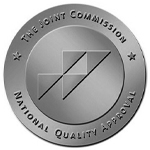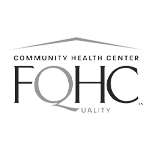
With summer in full swing, this is a great time of year for families to get active and enjoy time outdoors. However, the warmer weather months do pose some potential dangers.
Dr. Erin Hannagan of Keystone Pediatrics Chambersburg shares some summer safety tips about what everyone, and especially parents, should keep in mind this time of year.
Why is sun safety important?
Sunburns are unpleasant and can be damaging to the health of the skin. Skin cancers are some of the most common cancers in the US. Most sun damage occurs in childhood, so protecting your children today will help to prevent skin cancer in the future.
What can you do to avoid sunburn?
The best way to minimize exposure to the harmful ultraviolet radiation from the sun is to stay in the shade whenever possible and wear protective clothing. Cotton clothing with a tight weave, sunglasses and hats can help protect your children from the sun. Use a sunscreen with a minimum of SPF 15 (the higher the better), even on cloudy days. Apply sunscreen 15-30 minutes before going outside. Remember to reapply every two hours or after swimming or sweating. Babies under 6 months of age should be kept out of direct sunlight.
How can sunburn be treated?
The signs of sunburn typically appear 6-12 hours after exposure, with the greatest discomfort during the first 24 hours. If your child’s burn is just red, warm and painful treat it with cool compresses and cool baths. You can also give acetaminophen or ibuprofen. If the sunburn causes blisters, fever, chills, headache or other feelings of illness your child should be seen and evaluated by his or her healthcare provider. Severe sunburn should be treated like any other serious burn.
What is heatstroke?
Heatstroke is a condition that includes fever and often decreased level of consciousness. It is caused by failure of the body’s temperature regulating mechanism when exposed to excessively high temperatures. Sometimes extensive or severe sunburn can also lead to dehydration and in some cases heatstroke. If your child faints and has a decreased level of consciousness they need to be seen immediately by their pediatrician or in the Emergency Department.
What are some water safety tips for parents?
After birth defects, drowning is the number one cause of death for children ages 1-4. To lower the risk of drowning and other water-related injuries to children, the American Academy of Pediatrics (AAP) recommends “layers of protection.” Parents should start swim lessons as soon as your child is ready. When children are not expected to be around water, barriers can help prevent tragedies during inevitable, brief lapses in supervision. Close and constant supervision is essential when children are playing in and around water (put down your phone!). Especially during parties or picnics near water, when it is easy to get distracted, assign a “water watcher” to keep eyes on children constantly.
Children should always wear life jackets when in, on or near natural bodies of water. Children who are not strong swimmers should also wear life jackets at pools. Also, be aware of water dangers other than pools. Children can drown in as little as 2-3 inches of water. Use safety gates, door locks or doorknob covers to prevent small children from going outside unnoticed. Also be ready to respond when there is trouble. Everyone should learn CPR and safe rescue techniques to respond to a drowning incident.
This article contains general information only and should not be used as a substitute for professional diagnosis, treatment or care by a qualified health care provider.




